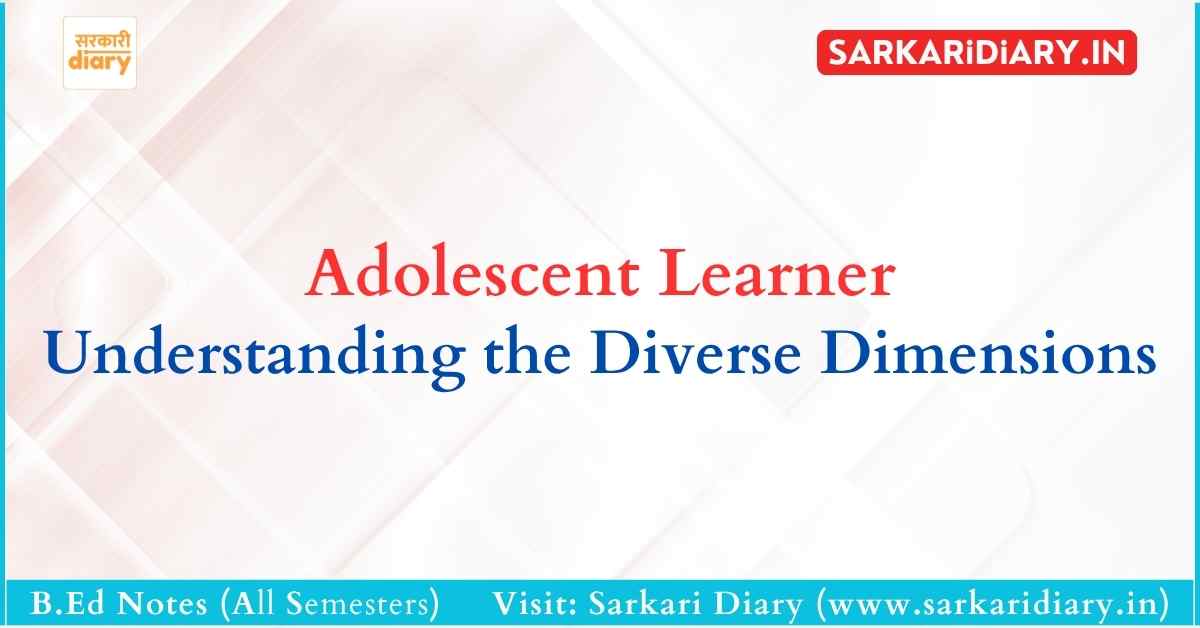Adolescent Learner: Adolescence is a significant phase of human development marked by rapid physical, emotional, and cognitive changes. However, adolescents are often mistakenly viewed as a homogeneous group, which overlooks the complexity and diversity that characterise this stage of life.

Diversity Among Adolescents
Adolescents in India represent a heterogeneous group, distinguishable by various social and cultural factors such as:
| Gender | Differences in experiences and challenges faced by male, female, and transgender adolescents. |
| Caste | Social stratification influencing opportunities and access to resources. |
| Class | Economic background affecting education, health, and lifestyle. |
| Geographical Location | Urban vs rural setting, influencing exposure, facilities, and cultural norms. |
| Religion | Diverse religious beliefs shaping values and behaviours. |
Additionally, adolescents can be categorised based on their circumstances:
- School-going and Non-school-going adolescents
- Dropouts
- Sexually exploited children
- Working adolescents (both paid and unpaid)
- Unmarried adolescents
- Married adolescents, including young fathers and mothers
Impact of Globalisation and Media
Indian adolescents today are significantly influenced by the forces of globalisation and electronic media. The rapid penetration of television, internet, social media, and mobile technology shapes their aspirations, attitudes, and cultural exposure. Despite these global influences, distinct interests and values remain embedded in India’s pluralistic culture, making generalisations challenging.
Understanding Adolescent Interests and Aspirations
While Indian adolescents share some common traits, their interests and aspirations vary widely due to:
- Regional cultural practices
- Socio-economic status
- Educational opportunities
- Family background and peer influence
Educators and policymakers must therefore approach adolescent development with sensitivity to these diverse backgrounds.
Conclusion
Adolescents are a dynamic and varied population group. Recognising the diversity in their experiences is essential for effective educational planning and intervention. Understanding the multi-faceted nature of adolescence helps in crafting inclusive learning environments that cater to the varied needs of all adolescents, thereby fostering holistic development.